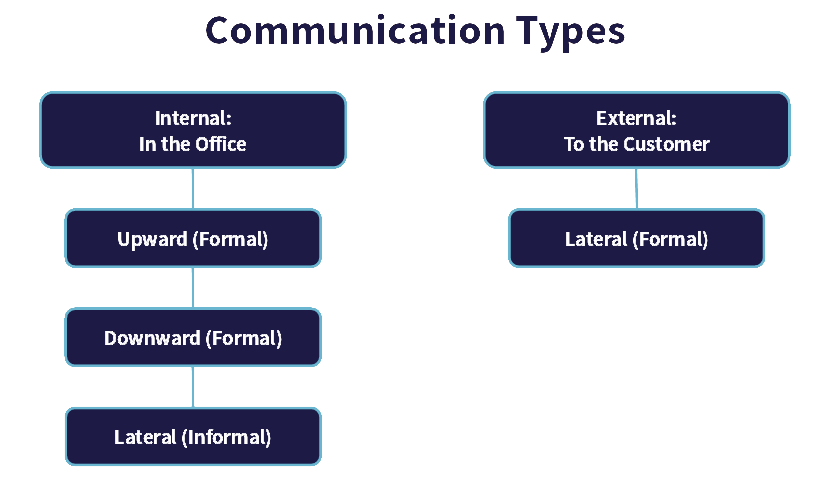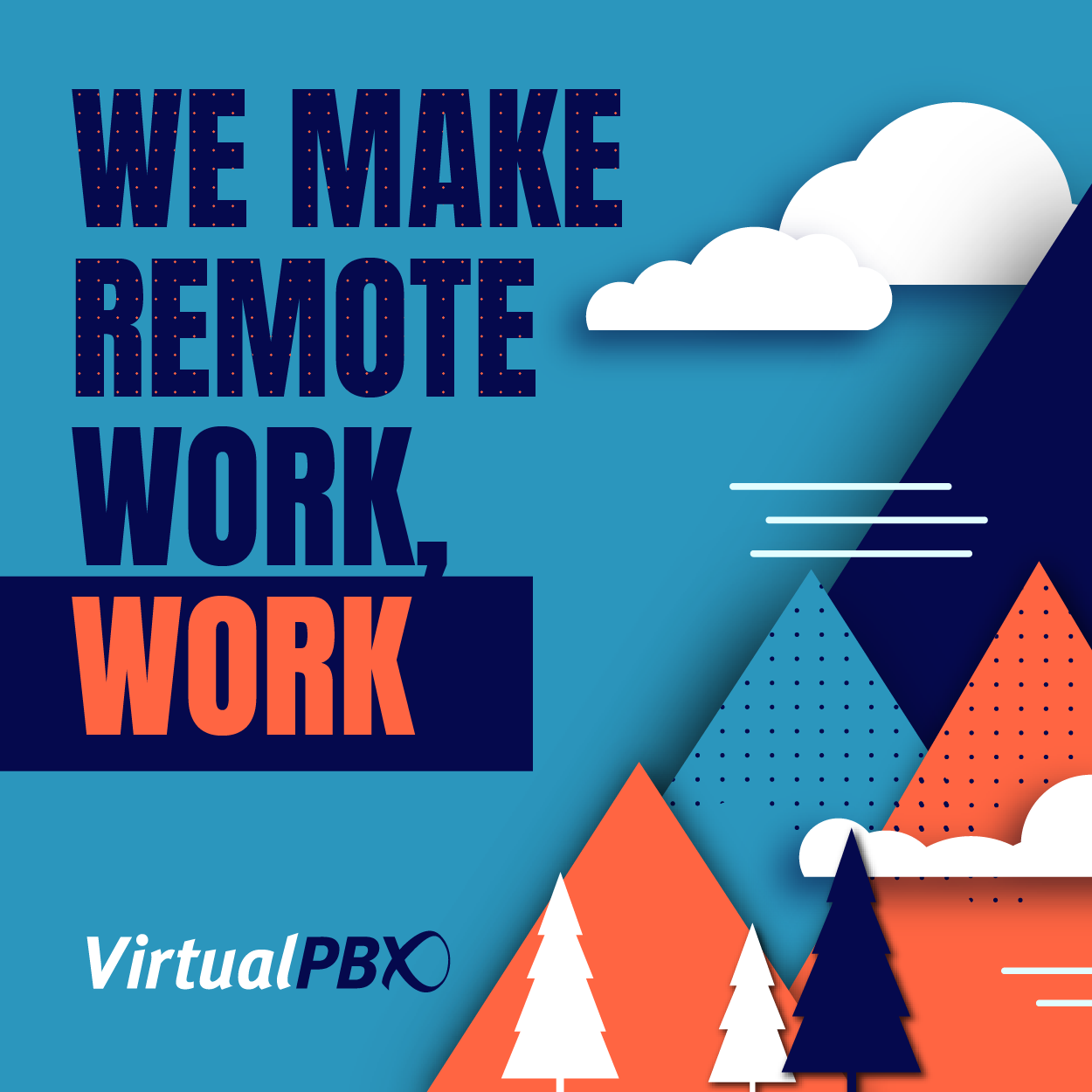Although it may seem like a silly goal at first, it can be extremely valuable for your team members to learn about business-related communication types.
Within your business, you might speak upward to a manager, downward to a subordinate, or laterally to a co-worker. Then, with a broad scope, you might also speak with customers. Both internal and external communication might not come easily to everyone at your company, so it can be a helpful tool to educate them about how they might manage these various styles of communication. Moreover, learning communication types can help them better assist customers with sales and services.
To that end, let’s again use the sprint planning model – this time to create a company document that outlines each communication style.

Communication Types Overview
We’ll start with a quick overview of a few broad communication types. This will set the stage for using them as part of a business sprint.
Upward Communication (Internal)
Speaking upward refers to communication a person would have with their manager or anyone higher than them in the ranks at a company.
This communication type is often exemplified by formality. They’re initiated with simple greetings like “Hello” or “Good morning.” Then they’re often closed with a “Good bye” or “Thanks.”
The body of any conversation can vary widely in context. However, it can include shares of important information that begin from the bottom and move upward. In other words, it’s proper for employees to share information with managers about their department activities so the hierarchy can function effectively.
Downward Communication (Internal)
Speaking downward refers to communication a manager would have with an employee. It’s the direct opposite to upward communication.
This communication type will likely include all the niceties of upward communication. “Hello” and “Thanks” will continue. However, it will seek to gather information in many cases rather than share it.
A manager who expects to be informed about department activities would need to listen more than share. They might ask leading questions such as, “What has your progress been on Project X?” to inquire about a specific task that’s been a recent priority.
Lateral Communication (Internal)
Speaking laterally refers to communication between employees on the same level of the business hierarchy. Two entry-level employees speaking with one another is one example. A board meeting of department vice presidents is another.
In these cases, some informal language could become commonplace. There’s no need to impress and no threat of being reprimanded. Greetings like “Hey” could replace “Hello.” A “See ya later!” could end a conversation.
The type of information passing at this level could include both shares and inquiries. Managers might need to know about the ongoing activities in other departments, so they might ask leading questions for that purpose. Entry-level employees could just as easily share their experiences with onboarding activities or about their similar day’s tasks.
External Communication With Customers
All the previously-discussed communications types here are defined as internal because they happen within a company. When anyone at the company speaks to a customer, it’s defined as external communication.
Like the upward and downward types of internal communication, external is usually more formal than informal.
Employees at any level should greet customers with a formal “Hello” or “Good morning.” Then they’ll want to continue with that same style of discussion throughout the conversation.
This mode of communication is similar to downward communication because it also relies on information gathering. You will always want to help the customer with some type of issue – whether it’s signing up for a service or troubleshooting a broken product. This requires a lot of listening on the part of the business so issues can be addressed efficiently.
 Communication Types in a Sprint
Communication Types in a Sprint
You can create your own communications document as part of a business sprint. The steps are straightforward enough that the task shouldn’t take more than a few weeks.
1. Define Your Goal, Educate Yourself
Your goal here is to create a shareable document that everyone at the company can read to learn about communication types.
To create that document, you’ll want to educate yourself about the types listed above and the ways in which they affect your company. Look into other literature about communications styles, and look at the relationships your business contains.
Most businesses will have a structure that places managers above employees and will see multiple people in those types of positions. Your business will have its own unique elements, though, so it will be good to note where the least and most communication takes place.
2. Speak to Department Heads
A great way of gathering information about how your company functions is by speaking to department heads.
These individuals may not be involved in every discussion in their department. But if they’re effective managers, they will witness most of what takes place.
They will be able to share the types of conversations they have with others at the company. Furthermore, they can share what they’ve seen between others, which can lead you to further interviews with employees.
3. Speak to Employees
Your conversations with department heads should lead you to employees.
These individuals can give you reciprocal information about how the department functions and what communication types are most prevalent.
In Steps 2 and 3 you will be creating a sort of ethnographic study. While this could be interesting regarding each department’s actual function (or disfunction!), the primary goal is to use what you’ve learned here in Step 4 where you’ll compile exact information as it applies to your company’s operations.
4. Write the Document
You will want your document about communication types to include both generalized and specific information.
In particular, it could be helpful to start with an overview of the types and their functions within any organization. This will allow readers to become familiar with the broad strokes of the topic.
Then you can you move into specific examples of how one person might speak to another. You can draw from your interviews with managers and employees to create short scripts about, for instance:
- A manager asking an employee how a project is progressing
- A middle manager providing a progress report to the CFO
- An entry-level sales person speaking to a customer
Finishing an Effective Sprint
While it won’t be possible for you to address every last communications situation, you can touch on a number of common themes revealed from your interviews with individuals at the company. This will help everyone at the company get an overarching look at the way the company functions at its core, and it could educate individuals who aren’t aware of specific differences in communications style across organizational levels.
The impact of your document could spur behavioral change at any level of the company. Although it could seem obvious to some people that formality is generally required when speaking to customers, not everyone has had the same personal or professional upbringing.
At VirtualPBX, we might want to use this document as part of our onboarding process for new employees. Our own KP360 post about managing a remote team speaks about introducing new hires to standard company documents. This type of instruction, alongside other introductory materials, can help us better handle sales of our Business Phone System by preparing employees to deal with customers and the managers who monitor their work.
Your sprint in this particular instance could also lead to future shorter sprints that use this document as their lead. You could create a sprint with the goal of creating an educational spreadsheet about communications types. Or you could take your ethnographic pseudo-study and show members of the company how various departments are working (or not working) well.
In any case, using this project as your first sprint should create some positive effects at your company and will help you better understand the way a sprint works to lead a project along a timely schedule.










